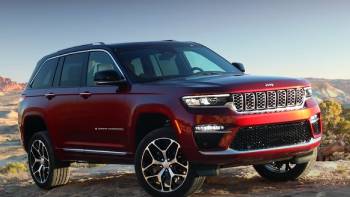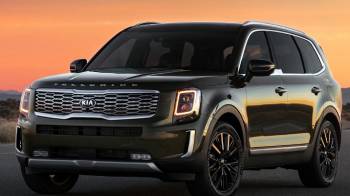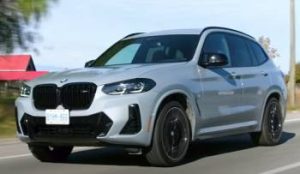When diving into the competitive world of midsize SUVs, two heavyweights emerge from the crowd: the Grand Cherokee and the Pathfinder. Both bring distinctive features to the table, making the choice a daunting task for many potential buyers. So, how do they stack up?
Let’s delve into the intricacies of both SUVs, examining their strengths and limitations.
A Brief Comparison Table
| Feature/Aspect | Grand Cherokee | Pathfinder |
| Base Engine | V6 (with V8 options) | V6 |
| Off-Road Prowess | Superior (with 4×4 options) | Moderate |
| Interior Luxury | High-end finishes & tech | Family-focused & spacious |
| Safety Features | Advanced (some optional) | Comprehensive & standard |
| Pricing | Competitive to high | Affordable to moderate |
| Brand Image | Adventure & ruggedness | Practicality & reliability |
| Towing Capabilities | Higher (with V8) | Moderate |
| Infotainment System | Cutting-edge | Modern & user-friendly |
| Fuel Efficiency | Moderate | Relatively better |
The Pros of the Grand Cherokee

- Performance Prowess
The Grand Cherokee has always been known for its powerful engines and superior towing capabilities. Whether you’re going for a weekend adventure or navigating rough terrains, this SUV doesn’t disappoint.
- Luxurious Interiors
Hop inside a Grand Cherokee, and you’re greeted with plush leather, state-of-the-art infotainment, and premium features that ooze luxury.
- Off-Road Capabilities
The Grand Cherokee remains a fan-favorite for off-road enthusiasts, thanks to its legendary 4×4 systems.
The Cons of the Grand Cherokee
- Fuel Efficiency
While it’s a beast on the road, it’s not exactly kind to the wallet at the pump, especially when compared to some of its peers.
- Price Point
All that luxury and performance come at a price. The Grand Cherokee can get pricey, especially when you add the optional features.
The Pros of the Pathfinder

- Family-Friendly Design
The Pathfinder boasts a spacious interior, making it a favorite for families. Its third-row seating ensures everyone rides in comfort.
- Safety First
Nissan often equips the Pathfinder with advanced safety features, enhancing its appeal to families and ensuring a safer journey.
- Affordable Luxury
It’s hard to beat the value you get with a Pathfinder. It combines luxury and functionality without burning a hole in your pocket.
The Cons of the Pathfinder
- Towing Capabilities
While suitable for everyday tasks, when it comes to heavy-duty towing, the Pathfinder might leave you wanting more.
- Less Off-Road Focused
Unlike the Grand Cherokee, the Pathfinder isn’t the first pick for off-road enthusiasts. It’s more of a city and highway cruiser.
Also Read: Are Snake Eater Injectors Worth It?
Key Differences Between Grand Cherokee and Pathfinder
The midsize SUV market is loaded with contenders, but the Grand Cherokee and the Pathfinder consistently make waves as top picks. To give you a clearer picture of where these two vehicles differ, we’re laying out the key differences in detail.
- Performance and Powertrain
Grand Cherokee: The Jeep Grand Cherokee is renowned for its beefy powertrains, from V6s to V8s. It offers a range of engines, including the legendary 5.7-liter V8, which ensures that you’ve got the power when you need it. This makes the Grand Cherokee a top pick for those who demand strong acceleration and exceptional towing capabilities.
Pathfinder: While the Pathfinder doesn’t offer the sheer variety of powertrains found in the Grand Cherokee, it does provide a solid V6 with respectable horsepower. It’s more than enough for daily driving and light towing. However, if you frequently tow heavy loads, the Pathfinder might feel a bit underpowered in comparison.
- Off-Road Capabilities
Grand Cherokee: The Jeep name is synonymous with off-roading. The Grand Cherokee carries that legacy forward with an array of 4×4 systems, skid plates, increased ground clearance, and more. It’s a favorite among those who love to venture off the beaten path.
Pathfinder: The Pathfinder can handle rough terrains and offers an All-Mode 4×4 system. Still, its primary focus remains on providing a comfortable on-road experience rather than rugged off-road adventures.
- Interior and Comfort
Grand Cherokee: Jeep has put considerable effort into making the Grand Cherokee’s interior luxurious. Premium materials, cutting-edge infotainment systems, and an array of optional features ensure a lavish driving experience.
Pathfinder: Nissan’s Pathfinder offers a more family-centric interior. While it doesn’t exude the same luxury as the Grand Cherokee, it boasts spaciousness and practicality. The third-row seating is an added bonus for larger families.
- Safety Features
Grand Cherokee: The Grand Cherokee has a suite of available safety features, from blind-spot monitoring to adaptive cruise control. However, some of these features come as optional add-ons, increasing the vehicle’s price.
Pathfinder: Nissan has a reputation for integrating advanced safety features into their vehicles. The Pathfinder showcases this with its Nissan Intelligent Mobility, which includes features like automatic emergency braking and rear cross-traffic alert as standard.
- Pricing and Value
Grand Cherokee: The Grand Cherokee’s base price is competitive, but as you move up the trims or opt for additional features, the costs can rise significantly. The sheer luxury and performance of higher-end models come at a premium.
Pathfinder: The Pathfinder offers an appealing blend of performance, safety, and luxury at a relatively affordable price point. Even higher trims of the Pathfinder are generally less pricey than equivalent Grand Cherokee trims.
- Brand Legacy and Image
Grand Cherokee: The Jeep brand carries a legacy of adventure, ruggedness, and American craftsmanship. The Grand Cherokee is often seen as a vehicle for those who wish to make a statement.
Pathfinder: Nissan, a Japanese brand, has built a reputation for producing reliable and innovative vehicles. The Pathfinder aligns with this image, emphasizing practicality and family-friendliness.
Also Read: Differences Between Adams 1310 And 1350 Driveshafts.
FAQs on Grand Cherokee and Pathfinder
Reliability can vary depending on specific models and years. Historically, Nissan tends to have a better overall reliability rating than Jeep. However, this doesn’t mean every Nissan is more reliable than every Jeep.
The Nissan Pathfinder is often compared to SUVs like the Toyota Highlander, Honda Pilot, and Ford Explorer. Its blend of performance, safety, and affordability makes it a worthy contender in its class.
The Jeep Grand Cherokee sees competition from SUVs such as the Ford Edge, Chevrolet Blazer, and Toyota 4Runner, to name a few. Its off-road prowess and luxurious touch set it apart.
“Better” is subjective and depends on individual needs. While the Grand Cherokee offers premium features and powerful performance, the Cherokee offers a more compact size and is often more affordable. Consider your priorities before deciding.
The Nissan Altima and Maxima have historically been praised for their reliability. However, in the SUV category, the Pathfinder has its merits as well.
Toyota has traditionally been one of the industry leaders in reliability. Nissan produces dependable vehicles, but in general comparisons, Toyota often edges out in longevity and dependability metrics.
Final Thoughts
When choosing between the Grand Cherokee and the Pathfinder, your decision will likely boil down to personal needs and preferences. Looking for a robust, off-road machine with a luxury touch? The Grand Cherokee is your pick. Need a reliable, family-friendly SUV without breaking the bank? The Pathfinder is calling your name.
Whether you’re inclined towards the adventurous allure of the Grand Cherokee or the practical elegance of the Pathfinder, it’s essential to align your choice with your needs, preferences, and budget. Both vehicles have their distinct merits and serve different audiences. The ball is in your court!



